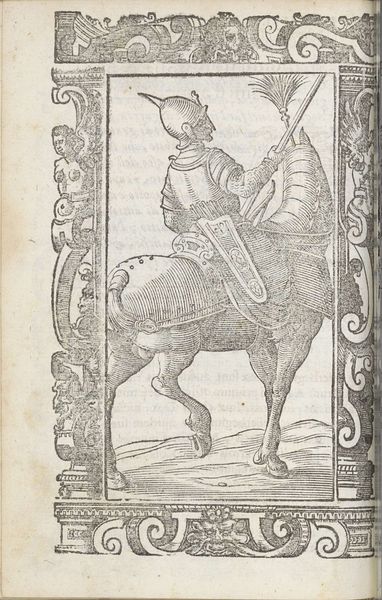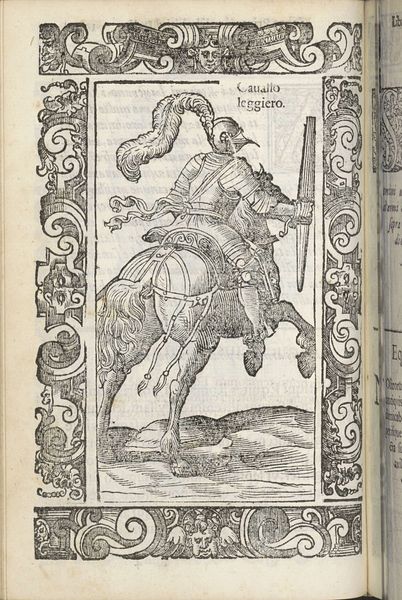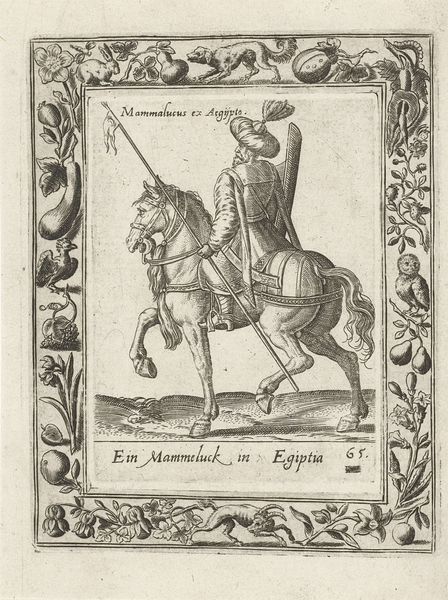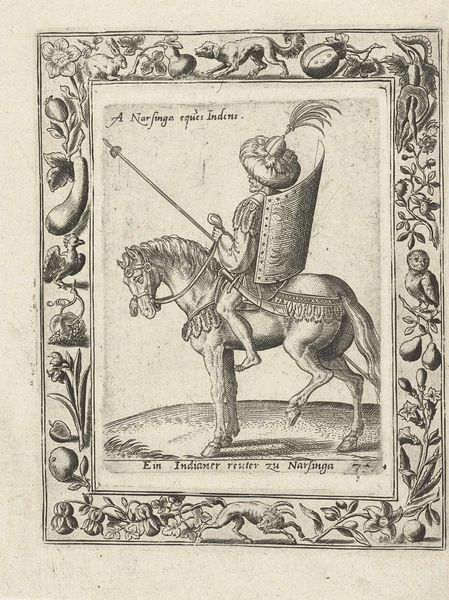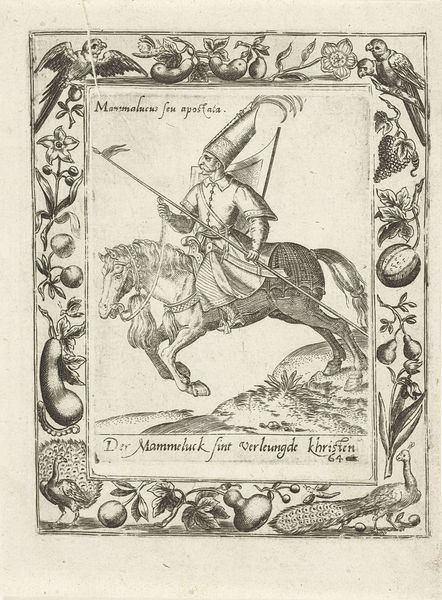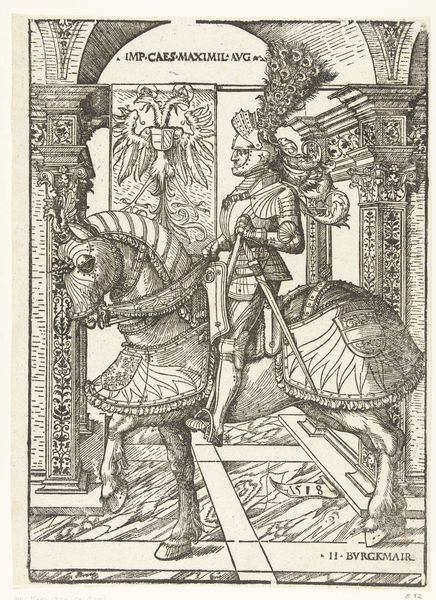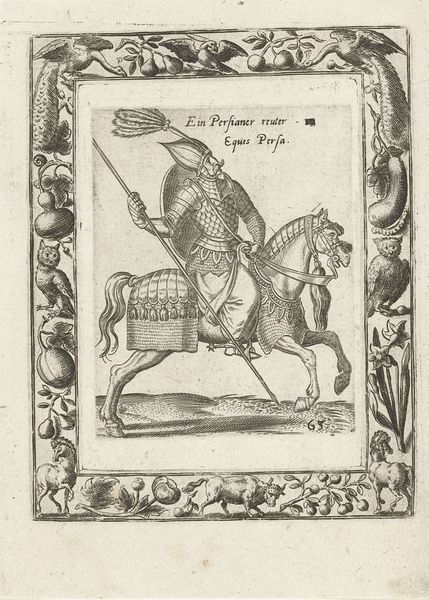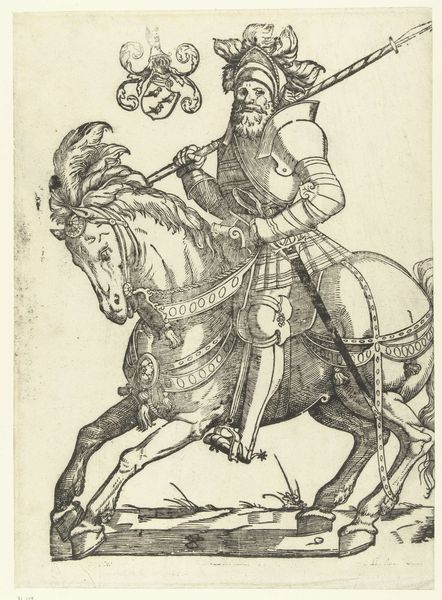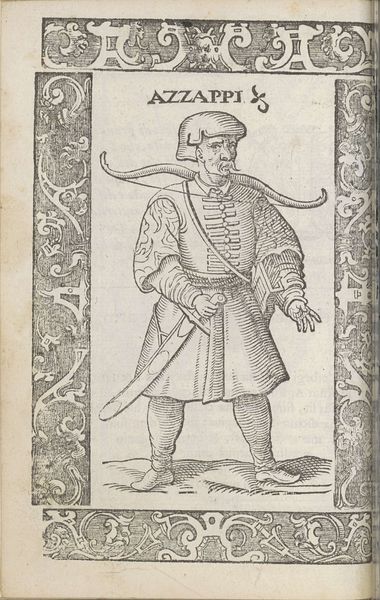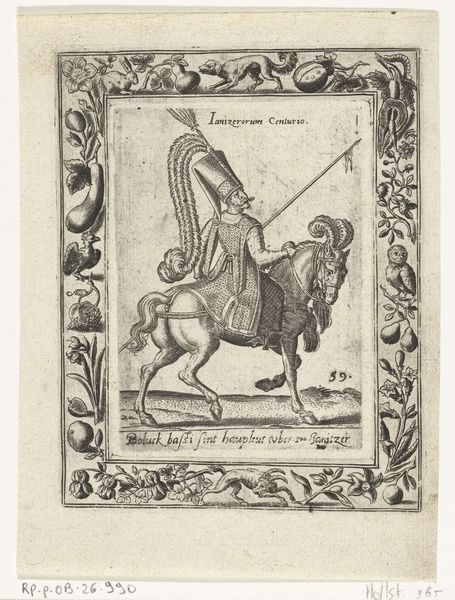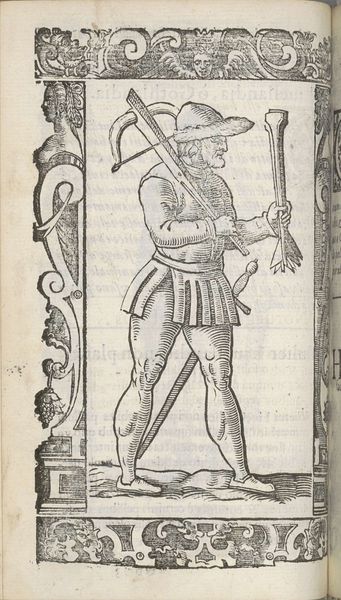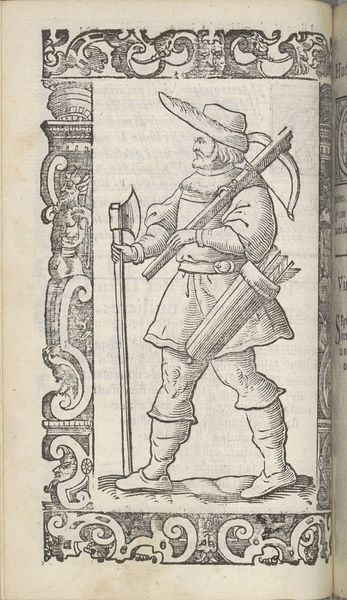
#
toned paper
#
pen drawing
#
pen sketch
#
old engraving style
#
personal sketchbook
#
pen-ink sketch
#
ink colored
#
pen work
#
sketchbook drawing
#
sketchbook art
Dimensions: height 167 mm, width 125 mm
Copyright: Rijks Museum: Open Domain
Curator: This drawing by Christoph Krieger, created around 1598, is titled "Beglierbei della Grecia". It seems to be an ink sketch on toned paper. Editor: My first thought is that there's an intensity here. It's both forceful, with the mounted rider, but also delicately rendered with these incredible fine lines. You feel the weight of history, of conquest. Curator: The use of pen and ink allows us to observe the lines more closely and Krieger's method of hatching is a labor-intensive task, which suggests that either this sketch was a piece on its own or a preparation piece for other bigger projects. We can even call it a form of proto-photography for record keeping. The detailed border, though, feels like something manufactured and purchased, a commercial rather than personal touch. Editor: Right, this resonates with discussions around the artist as a craftsman or artisan rather than someone producing art for pure aesthetic value. What does it tell us about the construction of identity and power in that era, particularly in relation to colonial or imperial narratives? The way the rider, presumably a "Beglierbei", is portrayed embodies a kind of idealized masculine authority. And thinking of Greece itself in the late 16th century… we’re on the tail end of Ottoman rule. Curator: The subject probably represents a specific person but Krieger is in essence creating an ethnographic document using readily available material and mass-produced frames. If you look closely you can see how each detail is clearly delineated – look at the different treatment of the textures. Think about the different roles paper plays at that moment. Paper has specific economic power at that moment since it is both transportable and easily manageable as opposed to painting, or sculpture. Editor: That's a crucial point. Looking at this piece through a postcolonial lens, it becomes a document of a specific power dynamic. The medium itself—pen and ink on paper— facilitates the cataloging and representation of othered cultures, becoming a tool for colonial administration and control. This drawing reinforces existing hierarchies, showing how these tools perpetuated social inequality. Curator: Considering Krieger’s penwork and dedication helps us understand a whole lot more about production as a way of learning about material culture during that moment. Editor: Absolutely. It reminds us how art is rarely separate from larger issues, power, identity, and modes of production and can actively perpetuate particular ideological frameworks.
Comments
No comments
Be the first to comment and join the conversation on the ultimate creative platform.
